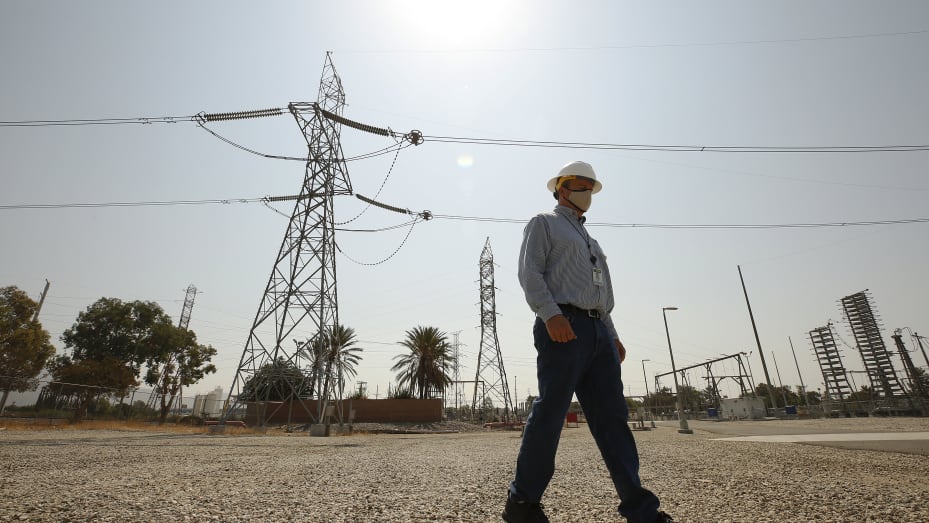The Federal Energy Regulatory Commission Order 881 represents a significant shift in the regulatory landscape for energy companies, introducing new requirements aimed at enhancing grid reliability and promoting competition. As the energy sector continues to evolve with increasing reliance on renewable sources and technological advancements, compliance with such regulatory measures is crucial. This guide is designed to provide energy companies with a comprehensive overview of FERC Order 881, breaking down its key components and implications for operations and market participation. By offering a step-by-step approach to compliance, we aim to equip energy professionals with the necessary knowledge to navigate these changes effectively. Understanding the nuances of Order 881 is essential for ensuring operational resilience, maintaining competitive advantage, and contributing to a reliable and sustainable energy future. This article sets the stage for a deeper exploration of how energy companies can prepare for and adapt to the new regulatory requirements introduced by FERC Order 881.
What are the basics you need to know about?

FERC Order 881 introduces critical updates to the regulations overseeing the energy sectors in the United States, focusing on improving the stability of the grid and enhancing competitive practices. This order significantly revises rules around transmission planning and cost allocation, highlighting the importance of a clearer, more effective approach to support the swift adoption of renewable energies and advanced generation technologies. A notable feature of this order is its push for greater openness in the transmission planning process, mandating comprehensive disclosure about transmission needs and the basis for project selections. Furthermore, it tackles the revision of cost allocation strategies, aiming to ensure that costs are fair, reasonable, and proportionally shared by those who benefit.
The order also champions collaborative efforts for interregional transmission projects, promoting cooperation across regional boundaries to identify and capitalize on beneficial projects, thus improving transmission network efficiency and minimizing bottlenecks. Grasping these fundamental components allows energy firms to better navigate the implications of FERC Order 881, paving the way for successful adherence and capitalizing on the opportunities for advancement and competitive edge in this evolving regulatory environment.
How to navigate the new complex landscape and standards?
Within the framework of FERC Order 881, a significant focus is placed on revolutionizing how energy companies manage and report the capabilities of their transmission and generation facilities. This directive aims to modernize grid management practices in light of the increased prevalence of fluctuating renewable energy sources. It requires energy providers to employ real-time data monitoring and utilize cutting-edge technology to accurately assess the operational capacity of their infrastructure.
This mandate extends beyond mere regulatory compliance, presenting an avenue for utilities to refine their network management, bolster system reliability, and avoid capacity overloads. Precise facility ratings enable smarter decision-making regarding the distribution of electrical loads, timing of maintenance activities, and infrastructural expansion efforts, leading to improved service delivery and grid dependability. For energy companies, this adjustment to the new standards involves strategic investments in technological upgrades and workforce training, promising significant returns in terms of operational efficiency and compliance with evolving regulatory expectations. Services like ips-energy can help you with the management process and they can guide you through the process and help you understand how to do the best you can to take your company to the next level.
What do you need to know to advance in openness and stakeholder collaboration?

FERC Order 881 underscores the importance of increasing transparency and encouraging active involvement from the community in the transmission planning stages. This directive seeks to open up the planning process, ensuring stakeholders, including end consumers, are well-informed about how projects are chosen and the criteria that guide these decisions. The requirement for utilities to publicly share comprehensive details about transmission demands, project selection criteria, and the justification for selected projects aims to foster a more transparent and collaborative environment.
This move towards greater transparency is designed to not only cultivate trust among all parties involved but also to leverage the collective knowledge and input of the wider community, leading to more efficient and effective grid enhancement solutions. Moreover, this focus on stakeholder engagement is in line with wider trends in the energy sector towards ensuring accountability and collaborative approaches to problem-solving. For energy providers, meeting these new standards means developing stronger channels for communication and engagement, promoting an organizational culture that values openness and inclusivity, thereby driving forward innovation and collective achievements in addressing the future challenges of grid management.
How to incorporate cutting edge technology that will lead to strategic advancement?
Adapting to the directives of FERC Order 881, energy corporations are encouraged to harness the potential of modern technology, aiming not just for regulatory alignment but also to pioneer sector-wide innovation. This regulation’s call for precise asset ratings and increased process transparency compels the integration of advanced data analytics, immediate asset monitoring solutions, and sophisticated simulation technologies. These tools enrich understanding of the electrical grid’s behavior, support preemptive infrastructure maintenance, and enhance the distribution of energy resources, thereby elevating both the reliability and the efficacy of the power grid.
Furthermore, the adoption of such technologies facilitates a more adaptable and proactive approach to managing the energy grid, especially in integrating fluctuating renewable energy contributions. Leveraging big data and artificial intelligence enables energy providers to forecast and neutralize potential grid instabilities, ensuring a consistent energy flow. Additionally, this shift towards technology-enhanced operations fosters improved communication with stakeholders, creating opportunities for instant engagement and cooperative dialogue.
By embracing these technological innovations, energy companies do more than just meet the stipulations of FERC Order 881; they position themselves at the forefront of the journey towards a more intelligent, sustainable energy landscape. This technological emphasis not only underscores a dedication to ongoing enhancement and compliance but also heralds a new era of industry-wide innovation and leadership.
FERC Order 881 represents a significant step forward for the energy sector, setting forth comprehensive mandates that require a strategic and technologically driven response from energy companies. Adhering to the principles outlined in Order 881 not only ensures regulatory alignment but also propels energy providers toward a future where the grid is more reliable, efficient, and adaptable to the evolving energy landscape. Embracing these changes is essential for energy companies looking to thrive in this new regulatory environment and contribute positively to the sector’s overall progress and sustainability.










